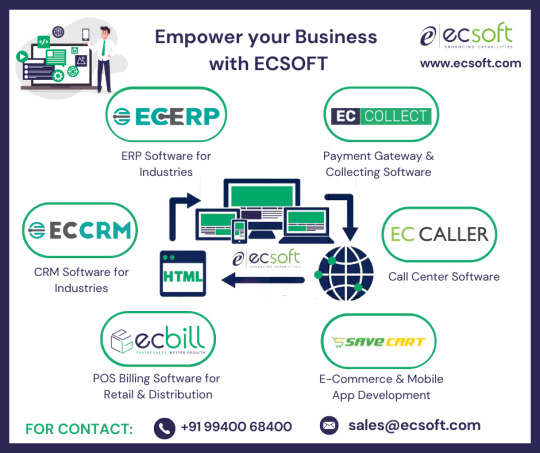#E-commerce Payments
Explore tagged Tumblr posts
Text
#Echecks#Electronic checks#Merchant services#Payment processing#Digital payments#ACH (Automated Clearing House)#Online payments#Payment gateways#Payment solutions#E-commerce payments#Payment processors#Secure transactions#Electronic funds transfer#Payment technology#Payment verification#Payment acceptance#Digital banking#Transaction fees#Fraud prevention#Payment authorization
2 notes
·
View notes
Text
#UPI (Unified Payments Interface)#Credit Growth#Digital Payments#Amazon Pay#Fintech Innovations#Financial Inclusion#Payment Solutions#Instant Credit#Mobile Payments#E-commerce Payments
0 notes
Text

Elevate your digital presence with our Web App Development Services Company in India. As a leading Website Development Services Company, we specialize in crafting tailored solutions that align with your business goals. From conceptualization to deployment, our team ensures a seamless and high-performance app experience for your users so they can partner with us to bring your web app vision to life and stand out in the Indian market.
#swayam infotech#web development#web application#website development#website design#web design company#web application development#e-commerce website development#website design and development#PHP website development#website application development#website application design and development#payment gateway integration#shopping cart web application#e-commerce solutions#offshore software development#custom web development#website developer#affordable website development#web development company#a website development company
3 notes
·
View notes
Text
Shopify Store Creation: A Step-by-Step Guide
#Shopify store setup#E-commerce website development#Online store creation#Shopify website design#Shopify store customization#E-commerce platform selection#Shopify store management#Online business setup#Dropshipping with Shopify#Shopify SEO optimization#Shopify payment integration#Shopify theme development#Shopify app installation#Social media marketing for Shopify#Shopify store promotion
8 notes
·
View notes
Text
#contactless payments in india#inventory management software in india#best hospitality pos system#cloud pos solution india#bar pos system india#contact us#oracle netsuite pos india#retail pos software india#billmade e-commerce marketplace
0 notes
Text
Mobile Application Development Company
RRFinCo is a leading mobile app development company in Patna, Bihar. that offers cutting-edge Mobile application development services Providing Company for Android and IOS devices. Call:- +91-7258906643

#gst services#recharge software#aeps software#api integration#account opening#loan service#dmt software#b2b service#api solution#b2c services#fintech solutions#fintech service#fintech industry#fintech software#mutual fund#mobile app design bd#mobile recharge#mobile app development#mlm software#white label solution#software company#e commerce software#gamming software#gaming#payment getway#payment getaway#b2b lead generation#ios app development#mobile application development#mobile app development company
0 notes
Text

Fraud Protection for e-Commerce Payment Processors | GPayments
#Fraud Protection for e-Commerce Payment Processors#ecommercefraudprevention#detectionsoftware#financial fraud detection software#risk and fraud management
0 notes
Text
ECSOFT, the best software development company in Chennai, delivers innovative technology solutions tailored to businesses across India and beyond. From ERP, CRM, billing software, and e-commerce platforms to mobile app development, ECSOFT empowers organizations to streamline operations and enhance customer engagement. With over 25 years of expertise and a portfolio of 5,000+ satisfied clients worldwide, we are committed to turning your vision into reality.

ECSOFT - Software Products & Services:
ERP Software Development CRM Software Development Billing Software Development Mobile App Development E-Commerce App Development Business Sales and Service App Development Call Center Software Development Payment gateway and Collection Software Development Online-Shopping Application Development Software Consulting & Training Custom Software Development Online & Offline Support Software Customization Software Maintenance
Get Affordable Software for your Business Needs
#software#software development#erp software#crm software#Billing software#mobile app development#e-commerce app development#call center software#payment gateway and collection software
1 note
·
View note
Text
How to Optimize Your eCommerce Website for Better Conversions

In today’s competitive digital landscape, having an eCommerce website is just the first step. The real challenge lies in converting visitors into paying customers. With countless online stores vying for attention, optimizing your eCommerce website for better conversions is essential to boost revenue and grow your business. Here’s a comprehensive guide to achieving higher conversions through proven strategies.
1. Streamline the User Experience (UX)
A seamless and intuitive user experience is the cornerstone of any high-converting eCommerce website. Ensure your site is easy to navigate, visually appealing, and responsive across all devices. Key points to focus on include:
Simple Navigation: Categorize products logically and provide clear menus.
Search Functionality: Incorporate advanced search features with filters and auto-suggestions.
Fast Loading Speed: Optimize images and code to ensure pages load in under 3 seconds.
2. Optimize Product Pages
Your product pages play a critical role in influencing purchase decisions. To maximize their impact:
Use high-quality images with zoom features.
Include detailed product descriptions that highlight key features and benefits.
Add customer reviews and ratings to build trust.
Provide clear calls-to-action (CTAs) such as “Add to Cart” or “Buy Now.”
3. Simplify the Checkout Process
A complicated or lengthy checkout process is one of the leading causes of cart abandonment. Optimize your checkout by:
Offering a guest checkout option to eliminate the need for account creation.
Reducing the number of steps required to complete a purchase.
Providing multiple payment options, including credit cards, digital wallets, and Buy Now, Pay Later (BNPL) services.
Displaying a progress bar during checkout to show customers how close they are to completion.
4. Leverage Personalization
Personalized experiences can significantly improve conversion rates. By analyzing customer behavior and preferences, you can tailor their journey:
Use personalized product recommendations based on browsing history.
Send targeted email campaigns featuring products customers viewed but didn’t purchase.
Show location-based offers or currency preferences.
5. Build Trust with Your Audience
Trust is a key factor in eCommerce success. To foster credibility:
Display secure payment badges and SSL certificates prominently.
Highlight a clear return and refund policy to ease concerns.
Include detailed contact information and live chat support for customer queries.
Showcase social proof through testimonials, ratings, and user-generated content.
6. Optimize for Mobile Commerce
With mobile devices accounting for a large percentage of online shopping, your website must be mobile-friendly.
Ensure your site is responsive and adapts seamlessly to different screen sizes.
Optimize mobile loading speeds to avoid slow performance.
Simplify navigation and checkout processes for smaller screens.
7. Use Data to Drive Decisions
Regularly analyze website data to identify bottlenecks and opportunities for improvement:
Track metrics such as bounce rates, time on page, and conversion rates.
Use heatmaps to understand how users interact with your site.
Conduct A/B testing to compare variations of your product pages, CTAs, and design elements.
8. Harness the Power of Social Proof
Social proof can significantly influence buying decisions. Implement the following:
Highlight customer testimonials and success stories on your homepage.
Showcase real-time purchase updates like “5 customers bought this item today.”
Encourage customers to leave reviews and share their purchases on social media.
9. Implement Retargeting Strategies
Not all visitors will convert on their first visit. Retargeting helps bring them back:
Use dynamic retargeting ads to remind users of products they viewed.
Send cart abandonment emails with incentives like discounts or free shipping.
Offer personalized deals to re-engage past customers.
10. Enhance Website Security
Customers are more likely to shop when they feel their data is safe.
Use secure HTTPS protocols for data encryption.
Regularly update software and plugins to avoid vulnerabilities.
Include a privacy policy to assure customers that their data is protected.
11. Engage Customers with Content
High-quality content can attract visitors and drive conversions.
Create detailed buying guides to help customers make informed decisions.
Use videos to demonstrate product features and benefits.
Publish blog posts that address common customer pain points or questions.
12. Offer Incentives to Drive Sales
Enticing deals and promotions can nudge hesitant buyers:
Provide limited-time discounts to create urgency.
Offer free shipping or bundles for higher-value purchases.
Implement loyalty programs to reward repeat customers.
Conclusion: Boost Conversions with a Strategic Approach
Optimizing your eCommerce website for better conversions involves a combination of user experience enhancements, personalized strategies, and data-driven decisions. By focusing on creating a seamless shopping experience, building trust, and leveraging modern technology, you can significantly improve your website’s performance and revenue.
Partner with SKAD IT Solutions for Retail and eCommerce Success
Looking to enhance your online store? At SKAD IT Solutions in Dubai, we provide cutting-edge retail and eCommerce solutions tailored to your business needs. From responsive designs to scalable platforms, our experts deliver strategies that maximize conversions and growth.
Contact us today to transform your eCommerce website into a high-performing retail powerhouse!
#Retail and E-Commrce Solutions#Retail and E-Commerce Platforms#Custom E-Commerce Solutions#POS and Payment Processing#ecommerce website solution#ecommerce web design Dubai#ecommerce website development Dubai#ecommerce development company in Dubai
0 notes
Text

Are you ready to streamline your operations and elevate your business? At JustForPay, we provide everything you need under one roof—from payment solutions and invoicing to inventory management and customer support.
For more info visit at: https://www.justforpay.co.in
#Payment Solutions#Online Payments#Secure Transactions#Digital Payment Gateway#Payment Processing#E-commerce Solutions
0 notes
Text
#Echecks#Electronic checks#Merchant services#Payment processing#Digital payments#ACH (Automated Clearing House)#Online payments#Payment gateways#Payment solutions#E-commerce payments#Payment processors#Secure transactions#Electronic funds transfer#Payment technology#Payment verification#Payment acceptance#Digital banking#Transaction fees#Fraud prevention#Payment authorization
2 notes
·
View notes
Text
Understanding E-commerce Payment Systems: A Comprehensive Guide
In today’s digital landscape, e-commerce is more than just a trend; it’s a vital part of the global economy. As online shopping continues to grow, understanding e-commerce payment systems becomes crucial for businesses and consumers alike. In this blog post, we’ll explore the different types of payment systems, their features, benefits, and best practices to ensure a seamless online shopping experience.
What is an E-commerce Payment System?
An e-commerce payment system is a platform that facilitates online transactions between buyers and sellers. It allows customers to make purchases through various payment methods while ensuring security and efficiency in the transaction process.
Types of E-commerce Payment Systems
Credit and Debit Cards
Widely accepted and trusted, credit and debit cards are the most common payment methods in e-commerce. They allow for quick transactions and often come with buyer protection features.
Digital Wallets
Platforms like PayPal, Apple Pay, and Google Wallet enable users to store payment information securely. Digital wallets are popular for their convenience and speed, allowing customers to complete purchases with a few clicks.
Bank Transfers
Direct bank transfers or e-checks offer a secure method for transactions, particularly for larger purchases. However, they may take longer to process compared to other methods.
Cryptocurrency
Emerging as a popular option, cryptocurrencies like Bitcoin provide an alternative payment method that emphasizes privacy and low transaction fees. However, volatility and limited acceptance remain challenges.
Buy Now, Pay Later (BNPL)
Services like Afterpay and Klarna allow customers to make purchases and pay for them in installments. This option has gained traction among younger consumers looking for flexible payment solutions.
Key Features of E-commerce Payment Systems
Security: Encryption and compliance with Payment Card Industry Data Security Standards (PCI DSS) are essential to protect sensitive customer data.
User Experience: A seamless checkout process reduces cart abandonment rates. Offering multiple payment options can enhance user satisfaction.
Integration: Payment systems should integrate smoothly with existing e-commerce platforms, inventory management, and customer relationship management (CRM) systems.
Analytics and Reporting: Robust reporting tools help businesses track sales, manage refunds, and analyze customer behavior.
Benefits of E-commerce Payment Systems
Increased Sales: Offering multiple payment options can attract a broader customer base, ultimately boosting sales.
Global Reach: E-commerce payment systems enable businesses to sell internationally, accommodating various currencies and payment preferences.
Improved Cash Flow: Quick processing of payments ensures that businesses maintain a healthy cash flow.
Enhanced Customer Trust: Reliable payment systems foster trust among customers, encouraging repeat purchases.
Best Practices for E-commerce Payment Systems
Choose the Right Payment Processor: Research various payment processors to find one that aligns with your business needs, considering factors like fees, features, and support.
Optimize the Checkout Experience: Simplify the checkout process by minimizing the number of steps required to complete a purchase. Offer guest checkout options to speed up the process.
Ensure Security Compliance: Invest in SSL certificates and ensure compliance with PCI DSS to protect customer information and build trust.
Stay Updated on Trends: Keep an eye on emerging payment technologies and trends to stay competitive and meet evolving customer expectations.
Offer Excellent Customer Support: Provide clear information on payment options and offer support for payment-related inquiries to enhance customer satisfaction.
Conclusion
E-commerce payment systems play a crucial role in the online shopping experience. By understanding the various types of payment methods, their features, and best practices, businesses can create a secure and seamless checkout process that enhances customer satisfaction and drives sales. As the e-commerce landscape continues to evolve, staying informed about payment trends will be key to success in the digital marketplace.
Have you recently made a purchase online? What payment method did you choose, and why? Share your experiences in the comments below!
0 notes
Text

Smart Payment Systems Market is Transforming Traditional Commerce Owing To Growing Adoption of Contactless Payments
The Smart Payment Systems Market Analysis has been gaining traction over the past few years owing to the rising adoption of contactless payment solutions globally. Smart payment technologies enable consumers to make secure contactless or proximity payments through smart cards, smartphones, or other devices for both in-store and online purchases. Smart payment solutions offer inherent advantages over traditional cash and card-based payments including convenience, ease of use, enhanced security and transaction speed. Increasing digitization and growing popularity of digital payment modes due to their safety and hygiene benefits amid the ongoing pandemic have accelerated the adoption of smart payment systems. The Global smart payment systems market is estimated to be valued at US$17.8 Billion in 2024 and is expected to exhibit a CAGR of 12% over the forecast period from 2024 to 2031. Key Takeaways Key players: Key players operating in the smart payment systems market are Apple, Samsung Electronics, Amazon, Alphabet, PayPal, Visa, Mastercard, Square, Telepin and ACI Worldwide. Key opportunities: Smart Payment Systems Market Growth of e-commerce and surge in mobile commerce present significant growth opportunities for players in the smart payment market. Implementation of Internet of Things (IoT) and integration of AI and blockchain technologies also offer scope for innovation. Global expansion: Major smart payment firms are focusing on partnerships, strategic acquisitions and expanding their geographical footprints especially in emerging economies to tap the rising demand for cashless transactions globally. Market drivers: The growing adoption of contactless payments fuelled by Covid-19 pandemic safety concerns is a major market driver. Government initiatives promoting digital payments along with increasing penetration of smartphones worldwide are expected to accelerate the adoption of smart payment solutions in the coming years.
PEST Analysis
Political: Smart Payment Systems Market News face legal and regulatory requirements related to data privacy and security set by governments. Changes in such policies can impact the market. Economic: Higher disposable incomes and adoption of digital technologies are fueling demand for convenient payment options. The market is also benefiting from expansion of e-commerce sector and changing consumer preferences towards contactless payments. Social: Younger generations are more inclined towards digital payment methods over cash as they find them secure, easy and provide added convenience. There is rising social acceptance of novel technologies like biometrics, mobile wallets etc. Technological: Advancements in areas of biometrics, blockchain, AI and 5G are allowing development of innovative payment solutions. Technologies like mobile wallets and contactless cards are enhancing user experience and security aspects of transactions. Continuous technology upgrades are positively impacting growth. Geographical concentration The Asia Pacific region accounts for largest share of the global smart payment systems market in terms of value. Countries like China, India, Japan and South Korea have seen high adoption rates of digital payment options. This can be attributed to rising internet and smartphone penetration, growing e-commerce industries and large population adapting to new financial technologies. The region holds significance being home to some rapidly expanding markets and tech hubs promoting innovative payment solutions. Fastest growing region
The Middle East and Africa region is expected to grow at the fastest pace over the forecast period. Factors such as increasing urbanization, government initiatives for promoting cashless economies, expansion of digital infrastructure and youthful demographics early to adopt new technologies are fueling the demand. Countries like South Africa, UAE, and Nigeria etc. are witnessing heightened investments towards establishing smart payment infrastructure to support their digitally transforming economies. This makes the region a highly potential market for payment solutions providers.
Get more insights on, Smart Payment Systems Market
About Author:
Money Singh is a seasoned content writer with over four years of experience in the market research sector. Her expertise spans various industries, including food and beverages, biotechnology, chemical and materials, defense and aerospace, consumer goods, etc. (https://www.linkedin.com/in/money-singh-590844163)
#Coherent Market Insights#Digital Payments Growth#Internet Payment Segment#Retail Payment Technology#E-commerce Payment Solutions#Data Privacy and Security Concerns#Biometrics Integration in Payments
0 notes
Text
FMCG Software in India
https://www.scribd.com/document/801456470/Top-POS-System-for-Readymade-Cloth-Store-in-India
#inventory management software in india#contactless payments in india#retail pos software india#bar pos system india#best hospitality pos system#cloud pos solution india#oracle netsuite pos india#billmade e-commerce marketplace#contact us#blogs
0 notes
Text
B2B Service Provider
RRFinPay Provide B2B services. as well as fintech services for required clients. https://rrfinpay.com/ #b2b #b2bmarketing #b2bservices #B2BSolutions #fintech #fintechsoftware #softwaredevelopment #mobileappdevelopment #mobileapplication #rrfinpay #fintech #rrfinco

#accounting#recharge software#gst services#loan service#dmt software#branding#commercial#ecommerce#economy#entrepreneur#White Label Services#B2C Services#B2B Service#Loan Service#AePS Software#DMT Software#Recharge Software#Dht Recharge#Bill payment Software#Payment Getway#Api Solution#Api Integration#Account Opening#credit Card#Demat Account Opening#Mutual Fund#Insurance Policy#Mlm Software#E-commerce Software#Gamming Software
0 notes
Text

Payment Fraud Prevention Tools | GPayments
#Payment Fraud Prevention Tools#risk and fraud management#ecommercefraudprevention#detectionsoftware#fraud protection for e-commerce payment processors
0 notes